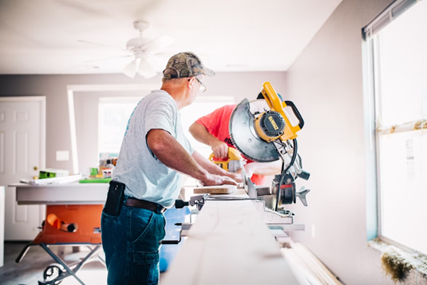
There are a number of different things that make good timber stand out from bad timber.
Without knowing, it’s easy to go to a timber yard and not understand what the difference could possibly be between all the different slabs.
In that situation, it’s important to ask the skilled professionals working there.
Click here to look at a quality building merchant who will be happy to help answer your timber questions.
Here, let’s talk about some of the characteristics that make great timber a truly great building material.
Durability and Strength
When considering what material to build something with, it’s vital to consider how it will stand the test of time. As such, durability and strength are very important.
When considering the timber that you’ll be using, consider what it is likely to have to deal with.
Typically, durability is measured by resistance to chemical, biological, and physical agents.
These could include acidic rain, funguses, or woodworms, respectively. Strength, however, is considered a measurement of the resistance against failure.
Strength is typically determined by taking a random sample of wood from a given batch, and putting it into a machine.
The machine will bend and press the wood until the wood breaks, at which point it will stop measuring.
The strength rating of the wood is determined by the measurement taken at the point of breaking.
Quality timber will have a high tensile strength (typically denoted by a grade on the wood), and may have been chemically pressure treated to ensure its durability.
Look for the grades and for labelling assuring you of chemical treatments.
Elasticity and Workability
Elasticity and workability go hand in hand. Essentially, they’re the exact opposites of one another.
Elasticity is a measure of how a timber may return to its regular shape, while workability is a measure of how easy it is to take a timber away from its regular shape.
To look for timber with high elasticity, which will aid your project by allowing for slight movement in intense conditions, look for timber piles.
In timber with good elasticity, the bottom piece will be bowed, while the top piece will be flat.
This shows you that the weight of the wood has shaped the timbers but that the timbers are still capable of returning to their natural shape with time.
The workability of timber is often considered by how easily it can be cut, and how few cuts it may take to get all the way through a piece.
To evaluate this, look at the end grains of timber. In a more workable timber, you should see roughly parallel lines denoting where a saw has cut it.
In a less workable timber, you may see several layers of parallel lines, each at different angles to one another.
These layers will be from different attempts to cut through the wood, and may denote where a timber worker had to give up, remove their saw, and start again at a different angle.
Structure
Top-quality timber should have a uniform structure. This is what makes it as strong, insulating, and fire-resistant as possible.
For wood to have a good structure, the internal fibres of timber should be straight and firm.
On top of this, the annual rings that show the age of the tree should be close together.
When you’re looking at timber, always take a look at the end grain. To the best of your knowledge, look for the fibres of the timber and evaluate how straight they are relative to one another.
On top of that, look for rings in the wood – narrower rings are better, as that implies the tree is mature.
As a tree gets bigger, the amount of wood it can grow on its outermost layer remains relatively steady.
Therefore, narrower rings can tell you that the wood is of good quality.
High-quality timber will make any of your projects look much more impressive.
It’s typically very beautiful, plus it will include a host of benefits to ensure your work is functional and remains strong for a long time.
Whenever you happen to find yourself looking at timber and evaluating it for your projects, consider the key characteristics outlined above.
(Pic free to use https://unsplash.com/photos/man-standing-infront-of-miter-saw-WEWTGkPUVT0)


















Recent Comments